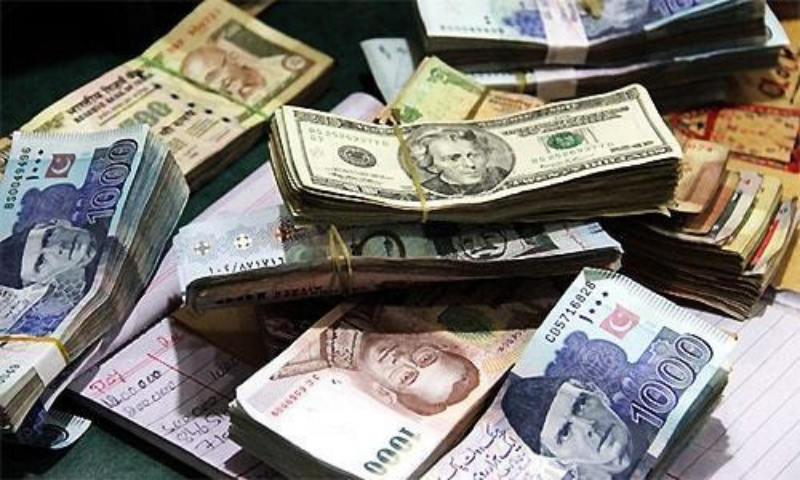Most indicators of national indebtedness are worrisome. Lowering the national indebtedness markedly in the remaining two and a half years of the PTI government seems difficult in the wake of Covid-19–triggered global economic slowdown, domestic political instability and compounding geopolitical challenges. This means the economy, which is already struggling to recover from the last year’s 0.4 per cent contraction, may continue to suffer from anaemic growth.
This is something the policymakers have apparently realised. After resorting to heavy net external and domestic borrowings in the first two years of the PTI government, they are now also trying to raise financial resources that may have little or no impact on the level of national debt. Attracting diaspora income through both remittances and portfolio investment, privatising state-owned enterprises (SOEs), incentivising foreign direct investment (FDI) and making attempts to boost both tax and non-tax revenues are the efforts centred around this objective.
But debt volumes are enormous and their servicing is expensive. These efforts also require additional debt relief and support from international creditors in case of external debt and prudent recourse to fresh borrowings in case of domestic debt.
The economy grew just 1.9pc in 2018-19, the first year of the PTI government, from 5.5pc in 2017-18, the last year of the PML-N government, shared by the caretaker setup installed to hold the July 2018 general elections.
The debt servicing cost is likely to remain lower than last year’s owing to a relatively stable exchange rate and the slashing of interest rates
But even this low growth of 1.9pc came at the cost of 34.6pc year-on-year growth in the country’s total (external and domestic) debt and liabilities that soared from Rs29.88 trillion in 2017-18 to Rs40.22tr in 2018-19.
Such low growth amidst a massive build-up in national indebtedness betrayed the quality of economic management, more so because it all happened before the emergence of Covid-19. What was more disappointing was that a big rise in the government’s domestic and external debts — and not in other components — contributed heavily to this expansion in total national debt and liabilities. This compounded the economic situation in 2019-20 particularly after the pandemic hit Pakistan. (The government’s domestic debt expanded to Rs20.73tr in 2018-19 from Rs16.41tr in 2017-18 and the rupee equivalent of its external debt also soared to Rs11.05tr from Rs7.79tr.)
This was bound to increase the total debt servicing requirement in 2019-20 and it did. In 2019-20, Pakistan had to spend 55pc of its tax revenue on the servicing of domestic and external debts alone. Even in 2018-19, 47pc of tax revenue was spent under this head, budget documents show.
When debt servicing eats up the bulk of tax revenue, policymaking trade-offs become limited and painful. The development agenda cannot be pursued well, joblessness cannot be contained, industrial growth cannot be accelerated, agriculture cannot be supported sufficiently and the services sector has to be left on its own. All this happened in 2018-19 and with increased intensity in 2019-20 — as the first wave of Covid-19 hit the country in the last four months of the fiscal year.
At the beginning of 2019-20, the PTI government approached the International Monetary Fund (IMF) for balance-of-payments support after more than a year’s dillydallying. The IMF-enforced economic discipline helped the government limit growth in its external and domestic debt.
Accordingly, the yearly rate of growth in total external and domestic debt and liabilities fell to 10.8pc in 2019-20 from a whopping 34.6pc in 2018-19. The government’s external debt (minus that of the IMF) rose only marginally from Rs11.05tr in 2018-19 to Rs11.82tr in rupee terms in 2019-20. Even a huge net increase of about Rs3.1tr in domestic debt in 2019-20 was smaller than its 2018-19 net domestic borrowing of Rs4.3tr.
Though some indicators of national indebtedness have depicted signs of improvement in the first quarter of 2020-21, it is too early to predict if the trend can be sustained throughout the year. A simple thing to remember is this: growth in domestic debt can be contained if the tax base expands, sufficient tax revenue is generated and the current expenses remain in check. An expansion in external debt can be checked if foreign exchange earnings from exports, remittances and FDI grow big and fast. An expansion in the tax base and enhanced generation of tax revenue seems less likely due to slow economic growth amidst the second wave of Covid-19.
Political instability can also take a heavy toll on exports and FDI. Home remittances may, however, continue to grow for some time — thanks to effective checks on illegal transfer of money and the incentives accorded to the Pakistani diaspora to use remittances for investment in government debt papers and housing schemes. On balance, the stock of the government’s external and domestic borrowings will not decline substantially in the current fiscal year.
But the debt servicing cost is sure to remain lower than last year’s due to a relatively stable exchange rate and the slashing of interest rates from 13.25pc to 7pc between mid-March and the end of June 2020.
The rupee had lost 34.2pc value against the dollar in 2018-19 and another 3.1pc in 2019-20. This massive depreciation in 2018-19, followed by a further marginal sliding in the rupee value in 2019-20, hugely increased the cost of external debt servicing compared to the previous two years i.e. 2016-17 and 2017-18.
On the other hand, slashed interest rates kept the cost of domestic debt servicing in check in 2019-20 and in the first half of 2020-21.
Debt worries persist and may even compound if the rupee begins falling and its total depreciation in the next two quarters becomes substantial. Or if interest rates begin to rise and touch double digits. But there is little indication that such things can happen during this fiscal year.
Published in Dawn, The Business and Finance Weekly, December 14th, 2020














































